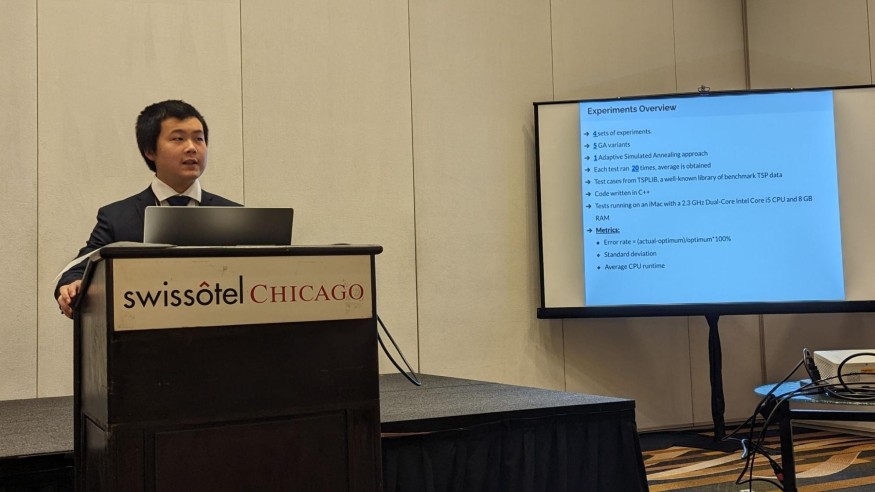
Bryan Zhu was sixteen when he learned to speak two languages fluently—one of algorithms, and the other, of adversity. Diagnosed with type 1 diabetes in late 2021, Bryan's world was a delicate ballet between juggling blood glucose spikes and dominating academic Olympiads. But while most teens his age were learning to navigate high school hallways, Bryan navigated the ever-changing landscape of a chronic disease—one that put him on the precipice of losing his memory.
"I remember waking up at 5 PM, completely bewildered," Bryan relates, remembering the night he accidentally overdosed on insulin. A predictive machine, he asserts, could've saved the day. "If I knew when my glucose would drop, I wouldn't have lost two weeks of memory."
What followed was not defeat, but rebirth.
A mathematician by ability and programmer by passion, Bryan channeled his near-miss into a mission. Today, he is building a deep learning-based blood glucose forecasting system—one that can potentially transform how tens of millions of people manage diabetes. Ongoing, the model aims to provide users with real-time blood sugar forecasts and early warnings of impending crashes or spikes on the horizon. Although the whole system is not yet fully built, the vision behind it already is profound.
"Even if I can reduce the psychological cost of making decisions for even a single diabetic," Bryan says, "that makes a difference."
He knows the risk. Every hour, every meal, every attempt is an equation. Not enough insulin, and hyperglycemia. Too much, and you risk another night like the one he barely survived.
This is not a science fair gimmick—it's a potential game-changer. The completed tool might connect with commercial glucose monitors currently being used in the world, give smarter warnings, and even allow for automating dosing decisions. Bryan is also exploring whether deep reinforcement learning can produce an entirely closed-loop system independent of anything else—a holy grail in diabetes tech that eludes even the best commercial platforms currently.
His project has already won awards. Bryan's project received 1st place honors in the Central Sound and Washington State Science and Engineering Fairs. And though greater than a kid scientist, he's also a convincing lobbyist: he spoke to the Washington State Department of Health, and during this year, he has been invited to present at the World Diabetes Congress. And though he doesn't wear an MD or PhD, he carries something arguably more valuable still—real-world experience.
Type 1 diabetes is largely misunderstood. It's not a fleeting condition; it's a constant companion and demands 24/7 surveillance. For Bryan, that's equated to carrying around an insulin pump that far too often raises suspicions instead of sympathy. "It looks like a phone," he says, remembering one day when a teacher asked him to stash the medical device away so he wouldn't have it during a test. Even on his AP exams, accommodations for using the insulin pump were not granted without multiple attempts from the counsellor.
"I would have done the same thing had I been in their place, and that's the problem. These aren't just medical barriers—they're systemic ones," Bryan says, frustration creeping into his otherwise measured tone. "There's still lack of awareness about our struggles. Diabetics shouldn't have to fight this hard for their rights."
Clever to the need to build community as well as code, Bryan also began the Type 1 Together Initiative (T1TI), a registered non-profit that educates, supports, and advocates for youth who live with diabetes. On the T1TI site, he's hosted awareness events, community events, and fundraisers that collectively have raised over $6,000 in donations for diabetes research. His efforts are as much solidarity as science.
But Bryan's intellectual firepower doesn't stop with healthcare. He is the president of TeamsCode, the largest high-school-organized coding competition in the U.S., affecting over 6,000 students from over 22 nations. Under his leadership, TeamsCode grew into an international platform, having guest speakers from Meta and Microsoft and securing over $22,000 in sponsorship. Bryan himself twice received Honorable Mention in the USA Junior Mathematical Olympiad and currently competes at the top level of the USA Computing Olympiad.
And still, he maintains, he's just getting started.
Today, Bryan is building a cell phone app that combines elements of his forecasting activities, such as auto-carb counting and trend prediction. He's having preliminary-stage negotiations to co-design with Dexcom, one of the original producers of continuous glucose monitors, making such technology more viable for field implementation. His research continues to deepen under the mentors at Harvard and Stony Brook University, and most recently, his forecasting study was accepted for publication in Elsevier's Expert Systems with Applications, a globally recognized, peer-reviewed journal.
His ultimate vision? "To build tech that that helps people live better," Bryan says. "I don't want children growing up with diabetes to miss out on being a kid."
That purposefulness—half data, half compassion—is what makes Bryan so remarkable. He's not merely solving for X; he's solving for every person who's ever been limited by a diagnosis. Every person who's fought against a system that couldn't understand them. Every kid who was taught to conceal their pump.
Every line of code in Bryan's universe is a line of resistance—and resilience.











